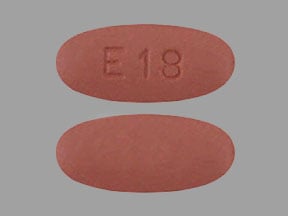
Moxifloxacin Coupons & Savings Card – Discount Prices from $42.84
Generic for: Vigamox
My prescription
Edit
400MG, Moxifloxacin (30 Tablets)
Select pharmacy

CVS
$42.84
COUPON PRICE
Walmart
$47.14
COUPON PRICE
Walgreens
$57.30
COUPON PRICE
Albertsons
$87.36
COUPON PRICEFree Moxifloxacin Savings Card

CVS
$42.84
Show this coupon to your pharmacist
ID
LHC6B3C297
PCN
CHIPPO
BIN
019876
GRP
LHX
This coupon is not insurance
More prescriptions for eye infection
More prescriptions for eye infection
Moxifloxacin dosage forms
Dosage Quantity Price from Per unit 400MG 30 Tablets $42.84 $1.43 400MG 60 Tablets $67.68 $1.13 400MG 90 Tablets $92.52 $1.03
| Dosage | Quantity | Price from | Per unit |
|---|---|---|---|
| 400MG | 30 Tablets | $42.84 | $1.43 |
| 400MG | 60 Tablets | $67.68 | $1.13 |
| 400MG | 90 Tablets | $92.52 | $1.03 |
Moxifloxacin Warnings
When taking moxifloxacin, an antibiotic from the quinolone family, it is crucial to understand the potential risks and safety precautions associated with its use. Below are important safety guidelines and warnings to consider:
Serious Tendon and Nervous System Risks: Moxifloxacin can lead to significant tendon damage, including tendonitis and tendon rupture, as well as nerve issues in the arms and legs. If you experience symptoms such as pain, numbness, burning, tingling, or weakness in your limbs, or changes in sensation, vision, or mental state, seek medical assistance immediately. Tendon issues may arise during or after treatment, especially in individuals over 60 years old, those on corticosteroids, or those with organ transplants.
Myasthenia Gravis Worsening: This medication might exacerbate myasthenia gravis, a muscle condition. Notify your doctor if you notice new or worsening muscle weakness or breathing difficulties.
Eye-specific Use: Moxifloxacin (Vigamox) is intended for ophthalmic use only. Do not apply it to any other part of your body.
Risk of New Infections: Prolonged use of moxifloxacin eye drops may lead to new infections by allowing resistant bacteria or fungi to thrive. Contact your healthcare provider if your eye infection does not improve.
Contact Lens Precaution: Avoid wearing contact lenses during an eye infection or while using moxifloxacin. Dispose of any lenses used before treatment, as they may harbor bacteria. Consult your doctor or optometrist on when it's safe to resume wearing contacts.
Severe Allergic Reactions: Some individuals may experience severe allergic reactions to moxifloxacin, such as swelling, shock, or anaphylaxis. Seek emergency medical attention if you develop hives, swelling of the face, lips, or tongue, or difficulty breathing. This risk is higher for those allergic to fluoroquinolone antibiotics.
Contraindication: Do not use moxifloxacin if you have a known severe allergy to fluoroquinolone antibiotics.
Consult with your healthcare provider to weigh the benefits and risks of using moxifloxacin, especially if you have any pre-existing conditions or concerns. Always follow their guidance and report any adverse effects promptly.
Moxifloxacin Side Effects
Common side effects:
- nausea
- diarrhea
- dizziness
- lightheadedness
- headache
- weakness
- trouble sleeping
- eye inflammation
- blurry vision
- dry eyes
- eye irritation
- watery eyes
- cough
- sore throat
- runny nose
- middle ear infections
Serious side effects:
- unusual bruising or bleeding
- persistent sore throat or fever
- changes in urine output
- persistent nausea or vomiting
- fatigue
- abdominal pain
- yellowing of the skin or eyes
- dark urine
- serious tear or break in the aorta
- severe intestinal condition related to C. difficile
- oral thrush or new yeast infections
- severe allergic reactions
- rash
- itching
- swelling
- severe dizziness
- trouble breathing
Moxifloxacin Interactions
Interactions with high risk of serious adverse effects and should be avoided:
- Cisapride
- Mesoridazine
- Pimozide
- Piperaquine
- Saquinavir
- Sparfloxacin
- Terfenadine
- Thioridazine
- Ziprasidone
Interactions with moderate risk that may require dose adjustment, closer monitoring, or timing changes:
- Amiodarone
- Dofetilide
- Procainamide
- Quinidine
- Sotalol
- Acarbose
- Acetohexamide
- Alfuzosin
- Alogliptin
- Amisulpride
- Amitriptyline
- Apomorphine
- Arsenic Trioxide
- Asenapine
- Astemizole
- Atazanavir
- Azithromycin
- Bedaquiline
- Benfluorex
- Canagliflozin
- Chloroquine
- Chlorpromazine
- Chlorpropamide
- Ciprofloxacin
- Citalopram
- Clarithromycin
- Clomipramine
- Clozapine
- Crizotinib
- Cyclobenzaprine
- Dabrafenib
- Dapagliflozin
- Dasatinib
- Delamanid
- Desipramine
- Disopyramide
- Dolasetron
- Domperidone
- Donepezil
- Doxepin
- Droperidol
- Ebastine
- Eribulin
- Ertugliflozin
- Erythromycin
- Escitalopram
- Exenatide
- Famotidine
- Felbamate
- Flecainide
- Fluconazole
- Fluoxetine
- Foscarnet
- Fosphenytoin
- Galantamine
- Gatifloxacin
- Gemifloxacin
- Gliclazide
- Glimepiride
- Glipizide
- Gliquidone
- Glyburide
- Granisetron
- Halofantrine
- Haloperidol
- Hydroquinidine
- Ibutilide
- Iloperidone
- Imipramine
- Insulin
- Insulin Aspart, Recombinant
- Insulin Bovine
- Insulin Degludec
- Insulin Detemir
- Insulin Glargine, Recombinant
- Insulin Glulisine
- Insulin Lispro, Recombinant
- Itraconazole
- Ivabradine
- Ketoconazole
- Lapatinib
- Lenvatinib
- Levofloxacin
- Linagliptin
- Liraglutide
- Lumefantrine
- Mefloquine
- Metformin
- Methadone
- Mifepristone
- Miglitol
- Mizolastine
- Nateglinide
- Nelfinavir
- Nilotinib
- Norfloxacin
- Octreotide
- Ofloxacin
- Olanzapine
- Ondansetron
- Ozanimod
- Paliperidone
- Panobinostat
- Paroxetine
- Pasireotide
- Pazopanib
- Pentamidine
- Perphenazine
- Pioglitazone
- Pipamperone
- Posaconazole
- Pramlintide
- Probucol
- Procainamide
- Prochlorperazine
- Promethazine
- Propafenone
- Protriptyline
- Quetiapine
- Quinidine
- Quinine
- Ranolazine
- Rasagiline
- Repaglinide
- Rilpivirine
- Risperidone
- Ritonavir
- Rosiglitazone
- Saxagliptin
- Sertindole
- Sevoflurane
- Sitagliptin
- Sodium Phosphate
- Sodium Phosphate, Dibasic
- Sodium Phosphate, Monobasic
- Solifenacin
- Sorafenib
- Sotalol
- Sunitinib
- Tacrolimus
- Tamoxifen
- Telaprevir
- Telavancin
- Telithromycin
- Tetrabenazine
- Tolazamide
- Tolbutamide
- Tolterodine
- Toremifene
- Trazodone
- Trimipramine
- Vandetanib
- Vardenafil
- Venlafaxine
- Vildagliptin
- Vinflunine
- Voriconazole
- Vorinostat
- Warfarin
Interactions with low risk that usually do not require a change in therapy:
